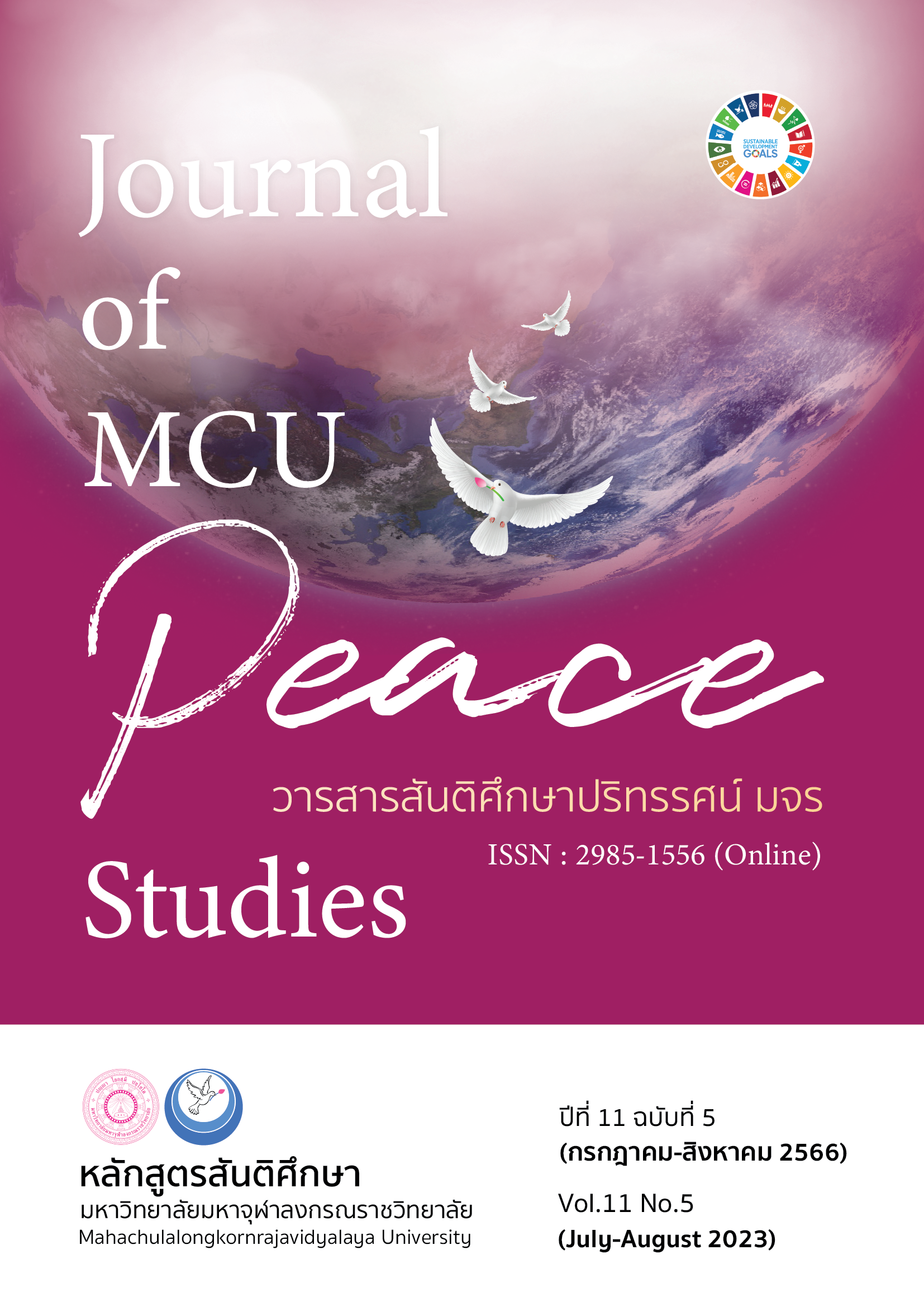คุณลักษณะเยาวชนที่มีความคิดสร้างสรรค์ทางสังคม ยุค Thailand 4.0
Main Article Content
บทคัดย่อ
บทความวิจัยครั้งนี้มีวัตถุประสงค์ เพื่อศึกษาองค์ประกอบของคุณลักษณะเยาวชนที่มีความคิดสร้างสรรค์ทางสังคม กลุ่มตัวอย่างที่ใช้ในการวิจัยคือ นักเรียนจากโรงเรียนสาธิตมหาวิทยาลัยศรีนครินทรวิโรฒประสานมิตร โรงเรียนเทพศิรินทร์ โรงเรียนสตรีสมุทรปราการ และโรงเรียนแพรกษาวิเทศศึกษา ซึ่งเป็นโรงเรียนที่เคยส่งนักเรียนเข้าร่วมการประกวดความคิดสร้างสรรค์โลกเกี่ยวกับการแก้ปัญหาสังคม ประเทศเกาหลีใต้ จำนวนโรงเรียนละ 180 คน รวมทั้งสิ้น 720 คน เครื่องมือที่ใช้คือ แบบวัดคุณลักษณะเยาวชนที่มีความคิดสร้างสรรค์ทางสังคม ซึ่งตรวจสอบความเที่ยงตรงเชิงเนื้อหาจากผู้เชี่ยวชาญจำนวน 3 ท่าน และได้ค่าความเชื่อมั่นทั้งฉบับเท่ากับ 0.92 วิเคราะห์ข้อมูลโดยสถิติการวิเคราะห์องค์ประกอบเชิงยืนยัน และสัมประสิทธิ์สหสัมพันธ์
ผลการวิจัยพบว่า องค์ประกอบของคุณลักษณะเยาวชนที่มีความคิดสร้างสรรค์ทางสังคมประกอบด้วย 7 องค์ประกอบ โดยเรียงตามลำดับความสำคัญคือ 1. การใช้เทคโนโลยีอย่างเหมาะสม 2. ไม่ยอมจำนนต่อปัญหา 3. ความคิดยืดหยุ่น 4.ความคิดคล่องตัว 5. จินตนาการ 6. ความละเอียดละออ 7. การฝึกคิดวางแผนเพื่อแก้ปัญหา โดยมีค่าไอเกน ของแต่ละองค์ประกอบ มากกว่า 1 ขึ้นไป ค่าน้ำหนักองค์ประกอบของตัวแปรแต่ละตัวมากกว่า 0.3 ขึ้นไป และค่าร้อยละความแปรปรวนสะสม 7 องค์ประกอบ เท่ากับร้อยละ 48.43 ส่วนค่าสัมประสิทธิ์สหสัมพันธ์ของแต่ละองค์ประกอบมีความสัมพันธ์กันสูง อย่างมีนัยสำคัญที่ระดับ .01 และมีความสัมพันธ์ไปในทิศทางเดียวกัน
Article Details

อนุญาตภายใต้เงื่อนไข Creative Commons Attribution-NonCommercial-NoDerivatives 4.0 International License.
ทัศนะและความคิดเห็นที่ปรากฏในบทความในวารสาร ถือเป็นความรับผิดชอบของผู้เขียนบทความนั้น และไม่ถือเป็นทัศนะและความรับผิดชอบของกองบรรณาธิการ ยินยอมว่าบทความเป็นลิขสิทธิ์ของวารสาร
เอกสารอ้างอิง
Bellanca, J., & Brandt, R. (2011). 21st Century Skills: Rethinking How Students Learn. United States of America: Solution Tree.
Carlos, S., Pablo, U., & Laurane J. (2017). Emotion Intelligence and Social Skill on Self-efficacy in Secondary Education Student. Adolescents. Journal of Adolescence, 60, 39-46.
Chuathong, S. (2010). Development of A Virtual Classroom Model Using Collaborative Learning and Synectics Instruction to Develop Preservice Teachers’ Creative Thinking. (Doctoral Dissertation). Chulalongkorn University. Bangkok.
Comrey, A. L., & Lee, H. B. (1992). A First Course in Factor Analysis. (2nd ed.). New Jersey: Lawrence Erlbaum Associates.
Guilford, J. P. (1950). Creativity. American Psychologist, 5(9), 444–454.
Hargreaves, W. A., Starkweather, J. A., & Blacker, K. H. (1965). Voice Quality in Depression. Journal of Abnormal Psychology, 70(3), 218–220.
Office of the National Economic and Social Development Board. (2016). The Twelfth National Economic and Social Development Plan B.E.2560 - B.E.2564 (A.D.2017 - A.D.2021). Bangkok: Office of the Prime Minister.
Panjamawat, T. (2005). Factors Affecting Creative Thinking of Undergraduate Students of Chulalongkorn University. (Master’s Thesis). Chulalongkorn University. Bangkok.
Punmanee, A. (1994). Creative Thinking. Bangkok: Ton-or.
Robinson, K., & Aronica, L. (2015). Creative School: The Grassroots Revolution That’s Transforming Education. New York: Viking.
Torrance, E. P. (1962). Guiding Creative Talent. Englewood Clifts: Prentice Hill, lnc.
Weisberg, P. S., & Springer, K. J. (1961). Environmental Factors in Creative Function: A Study of Gifted Children. Archives of General Psychiatry, 5, 554–564.


